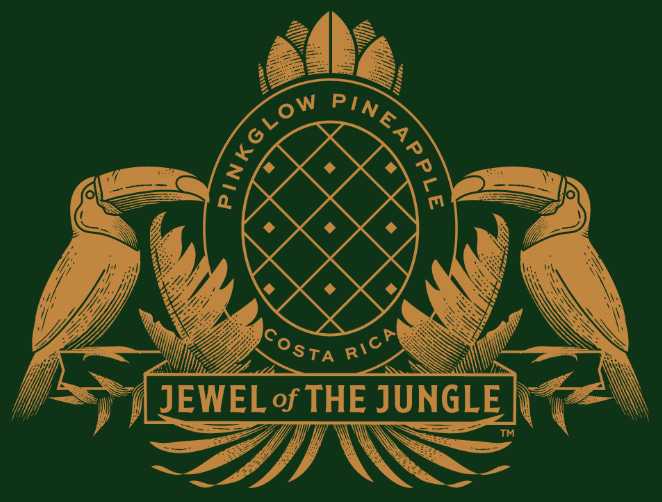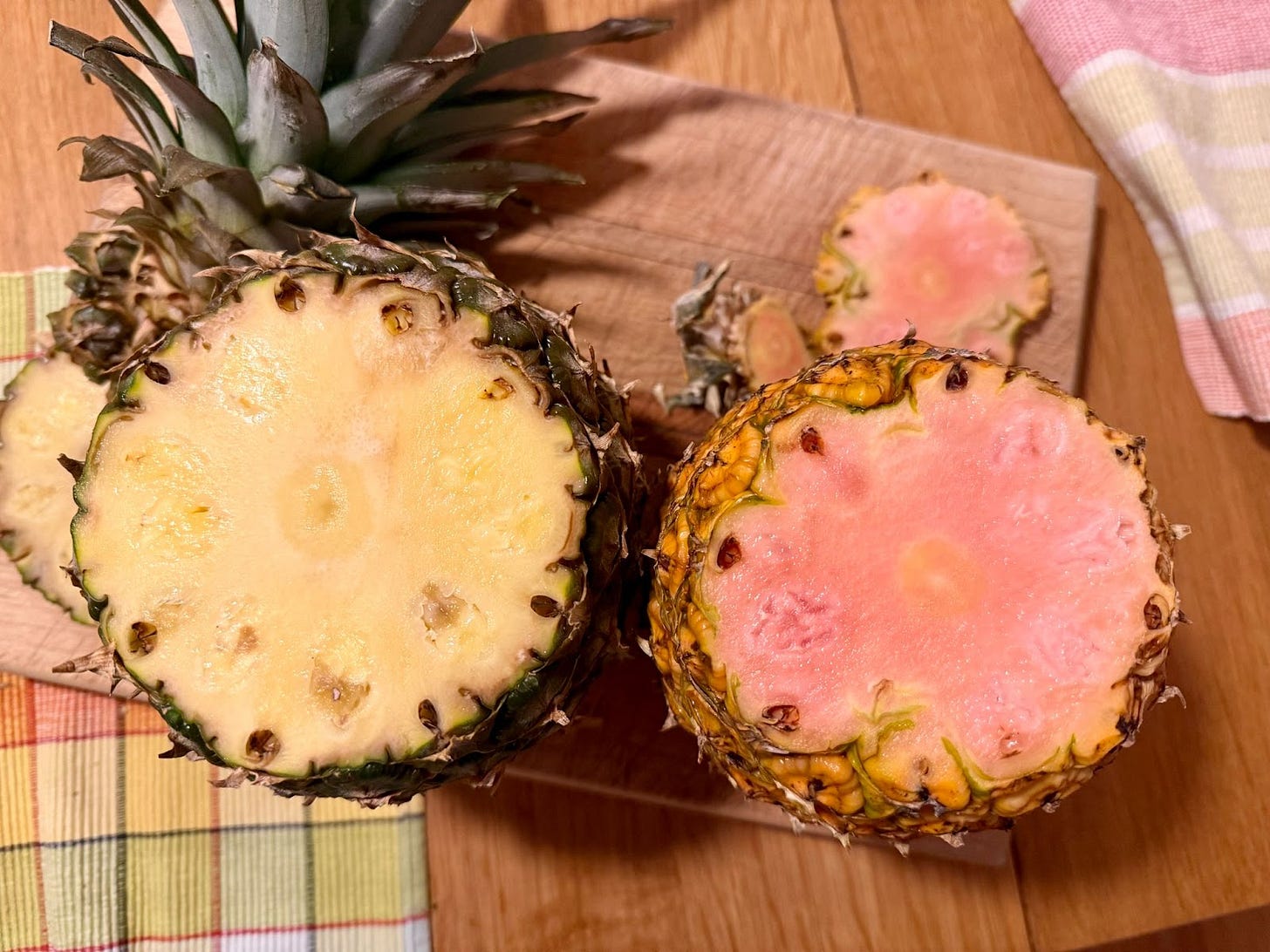From the vault: King of fruits
Ordinary yellow pineapples were once so precious they were rented for display at dinner parties, but centuries of innovation made them commonplace.
This piece is from Issue 18 of Works in Progress, released last week. You can read this article on our website and the rest of the issue here.
In 2020, an odd food product hit the shelves of North American supermarkets, courtesy of the agrofood company Del Monte.
It was a new type of pineapple, called the ‘Pinkglow’, notable for the color of its flesh: not the typical yellow, but a striking pink. It retailed for $49, ten or twenty times as much as a regular pineapple.
The hefty price tag was justified by the Pinkglow’s long development time. Del Monte claims it spent 16 years genetically engineering it. As a 2012 patent describes, the unusual color comes from overexpressing one enzyme and suppressing others so that the naturally occurring red pigment lycopene (think of tomatoes, watermelons, or pink grapefruit) accumulates in the pineapple flesh instead of being converted to yellower substances like beta-carotene, lutein, and zeaxanthin.
But mostly, the Pinkglow is expensive because it is a luxury product. Del Monte’s marketing makes this abundantly clear: the product’s website calls it ‘the jewel of the jungle’ and explicitly encourages consumers to post pictures of it on social media.

It seems silly, doesn’t it? Nobody needed a pink pineapple. Whatever resources Del Monte poured into its development bought precious little for the welfare of humanity: a mere curiosity. Couldn’t we have just gone on enjoying regular yellow pineapples indefinitely?
Perhaps. But it may be useful to remember that the yellow pineapple that we can buy in any supermarket is, itself, the product of many careers’ worth of work. In fact, for centuries, the ‘ordinary’ pineapple was a supremely expensive luxury item in Europe, fit for the early modern equivalent of posting social media pictures (displaying the fruit at dinner parties among aristocrats). It is only because its prestige drove many technical and commercial innovations that the pineapple became commonplace. Del Monte’s pink pineapple is only the latest in a long series of experimentations to make the fruit as tasty and widely available as possible.
You can read the rest of this article on our website.



